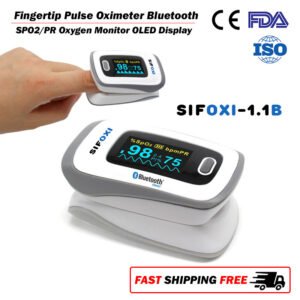At-home Coronavirus Testing Using Oximeter
In the chaos of the current coronavirus outbreak, access to testing is limited. With symptoms of the infection ranging from mild to severe, it can be difficult to know whether or not you should be worried if you start to feel ill.
In addition, medical providers are looking for ways to keep people who might infected with coronavirus from overwhelming hospitals, sometimes looking for testing that isn’t available to them.
But there is a way to monitor individuals at home.
In the US, patients with milder symptoms of coronavirus are being sent home with devices known as pulse oximeters. These clever machines measure the amount of oxygen in the blood, which can give you clues about lung health and how well oxygen is being pumped around the body.
In more serious cases of infection, coronavirus can cause damage to the lungs, making it difficult for the body to get enough oxygen. A pulse oximeter uses a quick, painless, non-invasive method to measure the make sure your oxygen levels, or ‘oxygen saturation levels’, are within a healthy range (typically around 95% to 100%).
“Anywhere from 97-99 percent is considered completely normal, for those people who have lung disease, they know usually what their normal is,” says Dr. Macri of the pulse oximeter.
Taking a reading is simple: a clamp-like device is placed on the finger, earlobe or toe and small beams of light pass through the blood. The pulse oximeter than measures the amount of light absorbed by oxygenated and deoxygenated blood. If oxygen saturation is too low, medical attention is needed straight away.
Reference: With lack of testing, Maryland company launches COVID-19 symptom-tracking app.
[launchpad_feedback]

